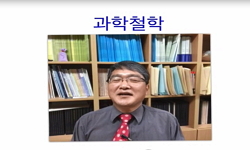본 연구는 초등학교에서 행복한 교육을 위한 원예치료 교육프로그램을 구안하는 것을 목표로 한다. 원예치료 교육프로그램은 기본적으로 HAPNB 교육의 이론에 근거하고, 창의, 배려, 소통 및 ...
http://chineseinput.net/에서 pinyin(병음)방식으로 중국어를 변환할 수 있습니다.
변환된 중국어를 복사하여 사용하시면 됩니다.
- 中文 을 입력하시려면 zhongwen을 입력하시고 space를누르시면됩니다.
- 北京 을 입력하시려면 beijing을 입력하시고 space를 누르시면 됩니다.

HAPNB 교육에 기초한 초등학교 원예치료 교육프로그램 개발 및 가치 = Development and Value of en Elementary Horticultural Therapy Education Program Based on HAPNB Education
한글로보기부가정보
국문 초록 (Abstract)
본 연구는 초등학교에서 행복한 교육을 위한 원예치료 교육프로그램을 구안하는 것을 목표로 한다. 원예치료 교육프로그램은 기본적으로 HAPNB 교육의 이론에 근거하고, 창의, 배려, 소통 및 융합의 역량 강화 프로그램이 될 수 있도록 하였다. 원예치료 교육프로그램은 도입, 전개 및 마무리로 구분하는 총 10차시로 구성되었다. 세부적으로 총 40개의 활동내용을 차시별로 4개씩 제시하여서 학교의 상황이나 학생들의 조건에 맞게 선택해서 활동할 수 있도록 하였다. 원예치료 교육프로그램의 적용으로 얻을 수 있는 교육적 가치는 다음과 같다.
첫째, 창의의 관점에서의 원예치료이다. 창의적 관점은 지식정보처리와 창의적 사고 역량과 연결되어서 창의적 인성 함양에 효과적이다. 이는 문제해결력을 향상시켜서 긍정적인 자아 형성에 도움 된다.
둘째, 배려의 관점에서의 원예치료이다. 배려는 심미적 감성 및 자기관리 역량과 연결된다. 서로를 배려하는 친밀감과 대인관계 능력 및 정서적 환경지각을 향상해서 대인관계 형성에 긍정적인 효과가 인정된다.
셋째, 소통의 관점에서의 원예치료이다. 소통은 공동체 및 의사소통 역량과 연결된다. 이 프로그램은 의사소통을 위한 매개체로 활용되어서 가족 간의 탄력성 향상을 통한 가족 적응력을 향상한다.
넷째, 융합의 관점에서의 원예치료이다. 융합은 자기관리 역량과 연결된다. 이 프로그램은 구성원들 간의 긍정적인 교류를 활성화해서 우리성(We-ness)을 높일 수 있다. 그 외 구성원 간의 사회 성숙도 향상을 통한 공동체 의식을 증가시킬 수 있다.
다국어 초록 (Multilingual Abstract)
The goal of this study is to design a horticultural therapy education program for happy education in elementary schools. The horticultural therapy education program is basically based on the theory of HAPNB education and was designed to be a capacity ...
The goal of this study is to design a horticultural therapy education program for happy education in elementary schools. The horticultural therapy education program is basically based on the theory of HAPNB education and was designed to be a capacity building program for creativity, consideration, communication, and convergence. The horticultural therapy education program consisted of a total of 10 sessions divided into introduction, development, and conclusion. In detail, a total of 40 activities were presented, 4 for each period, so that students could select and engage in activities according to the school situation or student's conditions. The educational values that can be gained by applying the horticultural therapy education program are as follows.
First, it is horticultural therapy from a creative perspective. A creative perspective is effective in cultivating creative personality as it is linked to knowledge information processing and creative thinking capabilities. This improves problem-solving skills and helps build a positive self-esteem.
Second, it is horticultural therapy from the perspective of consideration. Consideration is linked to aesthetic sensitivity and self-management capabilities. It is recognized that it has a positive effect on forming interpersonal relationships by improving intimacy, interpersonal skills, and emotional environmental awareness.
Third, it is horticultural therapy from the perspective of communication. Communication is linked to community and communication competence. This program is used as a medium for communication and improves family adaptability through improved resilience among families.
Fourth, horticultural therapy from the perspective of convergence. Convergence is linked to self-management capabilities. This programs can increase We-ness by activating positive exchanges among members. In addition, the sense of community can be increased by improving social maturity among members.
동일학술지(권/호) 다른 논문
-
2022 개정 음악과 교육과정을 반영한 사운드스케이프 활용 단계별 음악 창작지도 연구
- 대구교육대학교 초등교육연구소
- 송정주
- 2024
- KCI등재
-
2022 개정 체육과 교육과정에 대한 초등 예비교사의 인식
- 대구교육대학교 초등교육연구소
- 김지유
- 2024
- KCI등재
-
- 대구교육대학교 초등교육연구소
- 이세미
- 2024
- KCI등재
-
초등 두드림학교 사업 집행 과정 분석: Lipsky의 일선관료모형을 중심으로
- 대구교육대학교 초등교육연구소
- 김병국
- 2024
- KCI등재




 RISS
RISS






